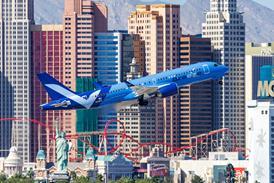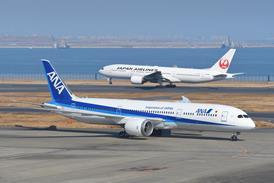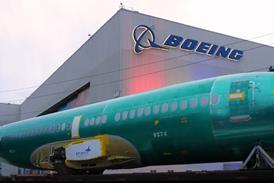The European holiday charter companies have taken their time about responding to the low-cost boom, but are now joining the game. It adds yet another dimension to an already overcrowded market. Something may have to give.
Ever since the low-cost revolution began to take hold in Europe, speculation has been rife over what, if any, response the region's travel giants would make to the new upstarts. After two years of mulling over their options, it seems that the giants have finally awoken. Germany's TUI and the UK's MyTravel are both in the process of dipping their feet in the water with low-cost launches, and others may follow. The immediate question is whether there will be room and if there is, where the growth will come from?
The progress of Europe's low-cost experiment was already a fascinating battle of business models and market segmentation. It promises to get a whole lot more interesting now that the leisure sector is in play and moving into unchartered territory, in every sense. Most calculations over the growth potential for Europe's low-cost challengers have tended to borrow from the original US experience. However, the USA simply does not have the same style of leisure business as Europe and it could prove a crucial point of difference.
It stems back to the mundane fact that while US workers are lucky to have more than two weeks of precious annual vacation, Europeans generally reckon on getting at least five - of which a couple have traditionally been taken as a set-piece family summer break. In particular, northern Europeans from the Germany, the UK and Scandinavia have flown down to the Mediterranean beaches en masse each year. Thus the growth of some sizeable dedicated charter carriers to carry them there together with their "buckets and spades".
When the low-cost carriers first emerged in Europe, the travel business hardly noticed. At the time, the travel business was preoccupied with its own whirlwind consolidation as tour operators, retail travel agents and the bulk of the charter airlines were hoovered up into a handful of giant travel groups.
But they have since had good cause to worry. Over the past couple of years the low-cost carriers have started to infringe on traditional charter territory. The incursions have not exactly been widespread, but they have been successful. The upmarket French resort of Nice, for instance, is now almost exclusively a low-cost destination from the UK, as charter carriers have been driven out. Even in Spain, the mainstay of the traditional package holiday, low-cost carriers are an increasing threat.
The low-cost success is all the more worrying because of a general perception that the package holiday, with its down-market image, was anyway losing some of its appeal. Instead, customers have shown signs, although difficult to quantify, of moving towards tailored holidays away from the herd, choosing their own accommodation, meals and transport. That is exactly what the low-cost carriers have put on offer.
The German charters have always had a business in selling around 20%of their seats without the package, and UK charters have started to push the concept. But it does not answer the issue of rigid schedules.
Moreover, the travel groups have apparently been jealously eyeing the progress of the low-cost carriers in other leisure markets too and would like some of the growth themselves. Thus the direct launches into the market, says Tim Jeans, who left Ryanair to head the new MyTravelLite operation in Birmingham.
The travel groups are not exactly risking much with these relatively small ventures. Their entry costs are low and they will not exactly be going head-to-head with the likes of Ryanair and easyJet, at least in the first flush. The likes of TUI, now an $11 billion business, and MyTravel could be formidable competitors, each with a clutch of powerful brands, acres of retail space and huge fleets. They also has a low-cost culture. However, the test may come in how well they adapt to the more flexible and entrepreneurial world of scheduled low-cost, a far cry from the traditional tour package.
However, the low-cost market is getting crowded. Anew report from Cell Consulting reckons that in five years time low-cost will account for 28%of the passengers out of Germany - a figure already close to being achieved out of the UK. But it also goes on to warn that on present estimates there would be an oversupply of seats of 20-30%.
Demand, especially if fares keep getting lower, could perhaps beat these forecasts. It is true that demand for European air travel to visit friends and relations (VFR) or weekend holiday homes is providing strong growth, but it is not yet on a scale to compete with the levels that help to fuel the US low-cost market. Europe may be changing fast, but most family and friends and most holiday homes are still only a car journey away. One way or another a shakeout seems almost inevitable. It will be interesting to see who falls first.
Source: Airline Business























